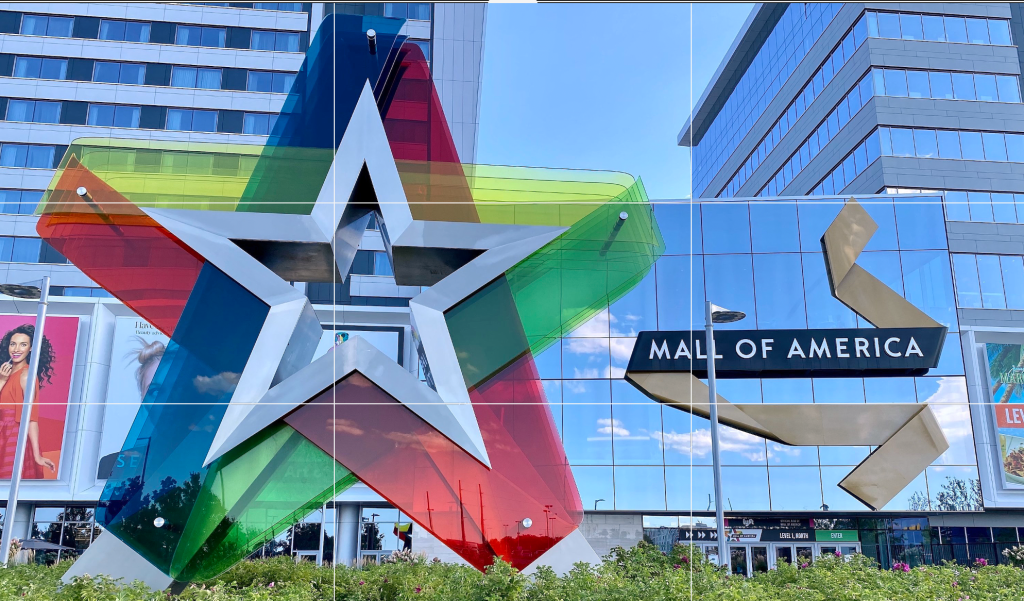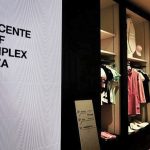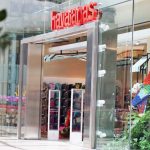A study conducted by Coresight Research found that traffic at U.S. shopping malls has recovered and surpassed pre-COVID levels, supported by the “halo effect” created by a brand’s online and offline presence in a mall, brand synergy in malls and omni-channel retail investments.
However, the research and advisory firm cautioned that lower-tier malls continue to struggle due to “stiff competition from e-commerce and other shopping centers, as well as their inability to attract retailers and brands that customers desire at the mall.”
Top-tier malls, however, are flourishing, outperforming the average mall in revenues, occupancy rates, and foot traffic as well as other retail formats, including open-air shopping centers. Coresight wrote, “High sales productivity is more pronounced at top-tier malls, which enjoy a more affluent customer base and are located in desirable areas for retailers to build and maintain their brand image.”
At non-top-tier malls, occupancy levels are subpar, but foot traffic recovered above pre-pandemic levels, with many positioned to tap some of the omnichannel benefits of having physical stores.
A core message in Coresight’s study is that thinking that shopping malls are”dead” is an oversimplification. Coresight wrote, “Dying shopping malls have become cultural symbols in the U.S., evoking nostalgia among Americans who reminisce about their experiences in these once vibrant centers. However, the reality of the American mall landscape is more nuanced than the popular narrative suggests.”
Coresight defined mall tiers in the study as follows:
- Top-tier malls feature luxury retailers and newer direct-to-consumer brands, often located in more affluent areas where a typical shopper has an annual income of over $200,000.
- Mid-tier malls are anchored by retailers with few or no vacancies, located in moderately affluent neighborhoods where a typical shopper has an annual income of around $100,000.
- Low-tier malls have an empty anchor, declining sales and a less-affluent customer demographic.
Shopping Malls Recovery Post-Pandemic
Core Site’s study cited the following statistics showing healthy underlying trends in the mall format:
- Following pandemic-led disruption and the temporary closure of retail stores in 2020 and 2021, foot traffic returned in 2022, based on a random sampling of 120 malls taken by Placer.ai, conducted by Coresight Research. Traffic at top-tier malls was up 12 percent on average in 2022 compared to pre-pandemic 2019 levels, while traffic at non-top-tier malls was up 10 percent.
- Coresight Research’s U.S. Consumer Tracker, a weekly consumer survey, found that 40.3 percent of respondents in its December 28, 2022 survey had visited a mall within the past two weeks of that time. Although year-to-date 2023 saw fewer visits to malls than that peak, visits increased steadily since a low of 9 percent in early July 2020, timed with the pandemic.
- Placer.ai data found that foot traffic from “Long-Distance Visitors,” or visitors whose home was within 100 miles or greater of a mall, bounced back in 2022 after declining in the early stages of the pandemic, which was favorable for top-tier malls. Coresight wrote in the study, “Top-tier malls serve as destinations (combining retail, dining and experiences in a single format) that attract domestic and international travelers, so we expect to see further increases in traffic from international shoppers in 2023—such as from China, where international travel restrictions were only lifted in January 2023.”
- According to data from the ICSC, malls accounted for 5.5 percent of the U.S. total retail gross leasable brick-and-mortar space in 2023, down from 5.7 percent in 2014, attributed to closings at low-tier malls and the increased popularity of other retail formats, including open-air shopping centers that often attract similar retailer banners. However, the ICSC estimated that 12.9 percent of U.S. consumer spending on retail goods and retail-adjacent services went through malls in the first quarter of 2023, meaning malls capture a larger share of sales than share of space and have higher sales in leasable areas than other retail formats such as open-air shopping centers.
- Occupancy stood at an average of 95.1 percent at top-tier malls in 2022, almost level with pre-pandemic occupancy levels; however, occupancy continued to lag pre-pandemic levels among non-top-tier malls, at 89.1 percent in 2022 versus 91.6 percent in 2019 and 92.7 percent in 2018.
Multichannel’s Halo Effect
Among the factors driving mall growth, Coresight noted that establishing an effective omnichannel strategy is “increasingly becoming a necessity in retail,” with brick-and-mortar retailers looking to combat challenges from e-commerce and online brands seeking to expand their reach and tackle rising customer acquisition and marketing costs.
Coresight wrote, “High-end mall owners, such as Brookfield Property Group, Macerich, Simon Property Group, and Taubman Centers, have reported high demand for retail space in recent quarters as consumers return to stores while simultaneously researching and shopping online—reiterating the significance of the halo effect.”
Brands and retailers also face rising online ad costs due, in part, to increased consumer adoption of data privacy features, such as Apple’s “app tracking transparency” feature. Rising customer acquisition costs are a top obstacle to achieving 2022 e-commerce goals by 61 percent of retailers and 66 percent of digital-first retailers, according to a 2022 study by CommerceNext. Coresight wrote, “Data privacy features make it more difficult for online platforms to effectively target consumers, so they drive up costs for their advertisers.”
Pano Anthos, founder and managing director at a venture fund and startup accelerator XRC Labs, told Coresight that both channels are important for customer acquisition as a consumer will conduct their research online and then make an educated purchase in a physical store.
Coresight further noted a trend of offline expansion by DTC brands and DNVBs (digitally native vertical brands), partly due to greater challenges by many securing funding. The report reads, “Offline expansion enables DNVBs to demonstrate profitable growth.”
At the same time, retailers with a strong brick-and-mortar presence have also found that investing in online and offline channels reduces acquisition costs. Coresight wrote, “Investing in physical stores that are independently profitable also enables e-commerce brands and retailers to tap the halo effect of driving online traffic without any of the associated costs.”
Collective Brand Synergy in Physical Retail Increases Sales
Coresight’s study found that brands increasingly recognize the value of synergy in driving sales in malls. Coresight wrote, “Brand synergy is the idea that brands generate more value by being in close proximity to other high-value or sought-after brands, which brands leverage to identify new locations that are likely to be successful, as well as increase store foot traffic from engaged shoppers.”
For example, Coresight noted that the Untuckit men’s shirt chain prefers physical locations adjacent to other men’s brands, mainly trending legacy brands, including Brooks Brothers or J. Crew. The study noted, “This enables the company to attract lookalike customers to its existing customers as it positions itself in the same tier as its neighboring tenants, illustrating the effectiveness of brand synergy.”
Similarly, the Express women’s chain seeks to co-locate near other fashion and apparel brands such as Aritzia, Banana Republic, H&M, Crew, and Uniqlo.
Coresight noted that luxury brands are opening stand-alone locations to tap brand synergies by opening next to each other. Some, including Gucci, are exiting some department stores to offer customers a more impactful brand experience in their locations. Coresight wrote, “This trend enables malls to increase overall sales and attracts other tenants who wish to co-locate with these desirable brands.”
Reinvestments In Omni-channel Capabilities
Simon Property Group, for instance, noted in 2022 that leasing velocity did not experience a pullback despite macroeconomic challenges in part because stores can offset the high cost of online returns. Coresight wrote, “Processing returns via BORIS (buy online, return in-store) cuts costs associated with shipping and provides increased convenience to consumers, which can boost loyalty. In addition, when consumers make an in-store return, they may be more likely to purchase other items from the retailer, which benefits the retailer through more potential sales.”
Canadian REIT Cadillac Fairview invested in a partnership to offer same-day and next-day shipping services for retailers at its shopping centers at competitive rates. Customers can also return items from multiple retailers to a drop-off location at the Cadillac Fairview shopping complex, enhancing convenience and reducing return processing costs for retailers.
Simon Property Group introduced a Simon Search tool that encourages omnichannel shopping by assisting customers in discovering products online to purchase in-store.
However, Coresight noted that one of the advantages of top-tier mall operators is financial resources to continually reinvest in and renovate malls, including building omnichannel capabilities, investing in upgrades and adding square footage. Coresight wrote, “Compared to lower-tier mall operators, top-tier mall operators have the financial resources to continually reinvest in and renovate malls to inspire consumers and meet evolving demand for experiences. These resource-rich operators are attractive to retailers looking to grow their physical footprint.”
Photo courtesy Mall of America
















